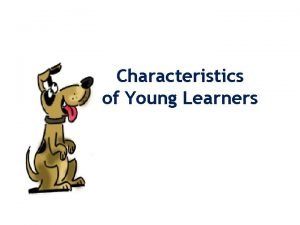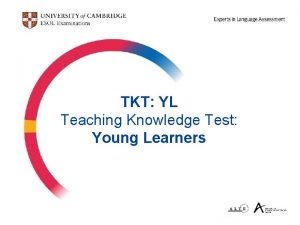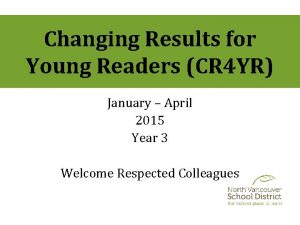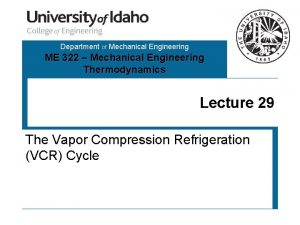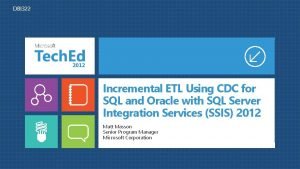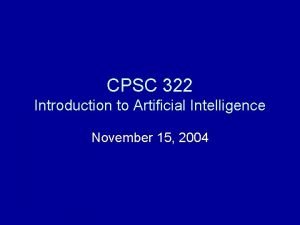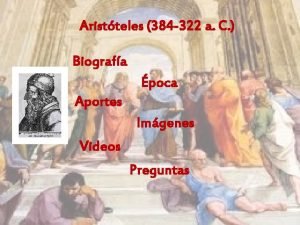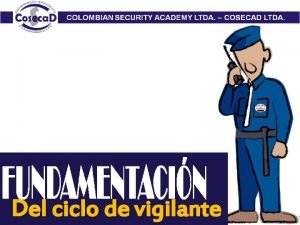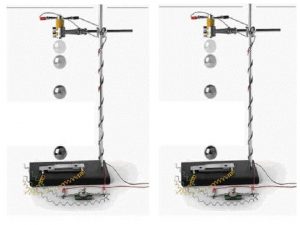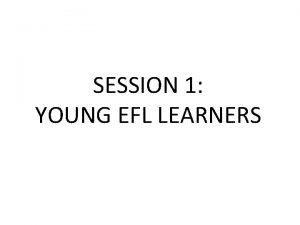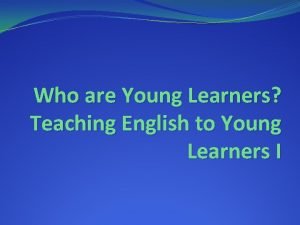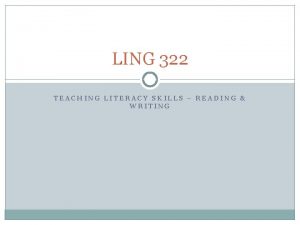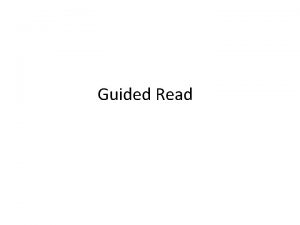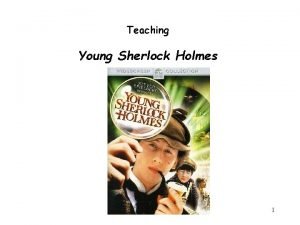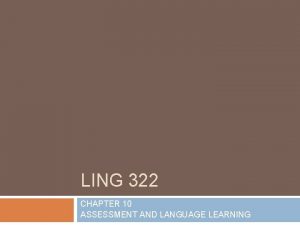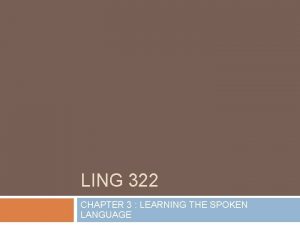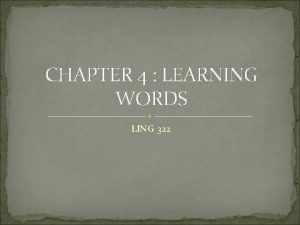LING 322 TEACHING LANGUAGES TO YOUNG LEARNERS CHAPTER














- Slides: 14

LING 322 – TEACHING LANGUAGES TO YOUNG LEARNERS CHAPTER 2 : LEARNING LANGUAGE THROUGH TASKS AND ACTIVITIES

OVERVIEW WHAT TASKS DEMANDS AND SUPPORT ARE HOW TO BALANCE TASK DEMANDS AND SUPPORT HOW TO CONSTRUCT A TASK

THE TASK AS AN ENVIRONMENT FOR LEARNING TASKS ARE USED AS A TOOL TO CHECK HOW MUCH A CHILD HAS UNDERSTOOD CHILDREN ARE ACTIVE LEARNERS – CONSTRUCTING MEANING AND PURPOSE

TASK DEMANDS ACTIVITIES SHOULD BE CAREFULLY THOUGHT OUT AND PLANNED, STRUCTURED SHOULD HAVE BOTH STRUCTURE AND DEMANDS

TYPES OF DEMAND COGNITIVE (related to concept and understanding of the world) LANGUAGE (related to using the foreign language and to uses of mother tongue in connection with foreign language learning) • Understand the way the grid works to show times and actions • Work left to right across columns and top to bottom • Understand that the pictures show past actions • Recognise the key action in each picture • • • Find the vocab to describe each action Find the past tense ending for each verb Put the words together in the right order Pronounce the words Give correct stress and intonation to words and sentences • Understand teacher’s instructions and explanations, and feedback

TYPES OF TASK DEMAND COGNITIVE Deals with the contextualization of language, difficulty of concepts LANGUAGE Determining the language whether spoken or written Understanding the production Extended talk or conversation Genre Needed grammar and vocab INTERACTIONAL Type of interaction required Nature of interaction METALINGUISTIC The use of technical terms about language in production or comprehension INVOLVEMENT Degree of ease or difficulty with the task Links to the child’s interest and concerns Novelty, humor, and suspense PHYSICAL How long can the child sit still Needed actions Needed motor skills

TASK SUPPORT COGNITIVE From familiar formats of graphics From familiar topics and content LANGUAGE Re-use of language Moving from easier to difficult Using known vocab and grammar Use of L 1 to support L 2 development INTERACTION Type of interaction AL From helpful co-participants From the use of familiar routines METALINGUI STIC From familiar technical terms to talk about new language Clear explanations INVOLVEMEN Can come from content and activity that is easy T Mixing physical movement and calm, seated activities PHYSICAL Variation in sitting and moving Use familiar actions Match to fine motor skills development

HOW TO BALANCE DEMANDS AND SUPPORT ZONE OF PROXIMAL DEVELOPMENT + SPACE FOR GROWTH = what children need for their growth and development

HOW TO STRIKE A BALANCE THE GOLDLILOCKS PRINCIPLE A task that is going to help the learner learn more language is one that is demanding but not too demanding, that provides support but not too much support Language learning is a repeated process of stretching resources slightly beyond the current limit/ability, learning new skills and moving on to the next challenge

LANGUAGE LEARNING GOALS HOW CAN TEACHERS ENSURE THAT THE BALANCE OF DEMANDS AND SUPPORT PRODUCES LANGUAGE LEARNING? Ø Set clear and appropriate language learning goals Ø Provide scaffolding for the tasks – breaking down into manageable steps with sub goals !!!too many demands will make children anxious, too few demands will make language learning boring

DEFINING “TASK” FOR YOUNG LEARNERS FEATURES OF TASK USE : ü Coherent and unify for learners – from topic, activity and outcome ü Have meaning and purpose ü Have clear language learning goals ü Have a beginning and an end ü Involve learners actively ü Aim for dynamic congruence – age, socio-cultural appropriate

STAGES IN CLASSROOM TASKS (pg 32 -34 PREPARATION – prepare learners to be able to complete core activities CORE ACTIVITY – set up through language learning goals FOLLOW-UP – builds on successful completion of the “core”

TASK AS PLAN vs TASK IN ACTION TASK AS PLAN The task is in plan. Teacher may not know what will happen when the activity is used. Cannot be fully evaluated o TASK IN ACTION When the task is used in a class

IN SUMMARY TASK AS A TOOL FOR LEARNING TASK SHOULD HAVE STRUCTURE AND DEMANDS WHAT IS TASK SUPPORT BALANCING TASK DEMAND SUPPORT LANGUAGE LEARNING GOALS STAGES IN CLASSROOM TASK AS PLAN & TASK AS ACTION
 Teaching grammar to young learners
Teaching grammar to young learners Teaching young learners english
Teaching young learners english Involuntary attention meaning
Involuntary attention meaning Tkt: yl resources
Tkt: yl resources Changing results for young learners
Changing results for young learners Remedial teaching is employed to
Remedial teaching is employed to Eee ankara
Eee ankara Me 322
Me 322 Ssis 322
Ssis 322 Mycin
Mycin Biografia de aristóteles (384-322 a.c.)
Biografia de aristóteles (384-322 a.c.) Decreto 3222 del año 2002
Decreto 3222 del año 2002 Fe 322
Fe 322 Aristote 384-322
Aristote 384-322 Cpsc 322: introduction to artificial intelligence
Cpsc 322: introduction to artificial intelligence


